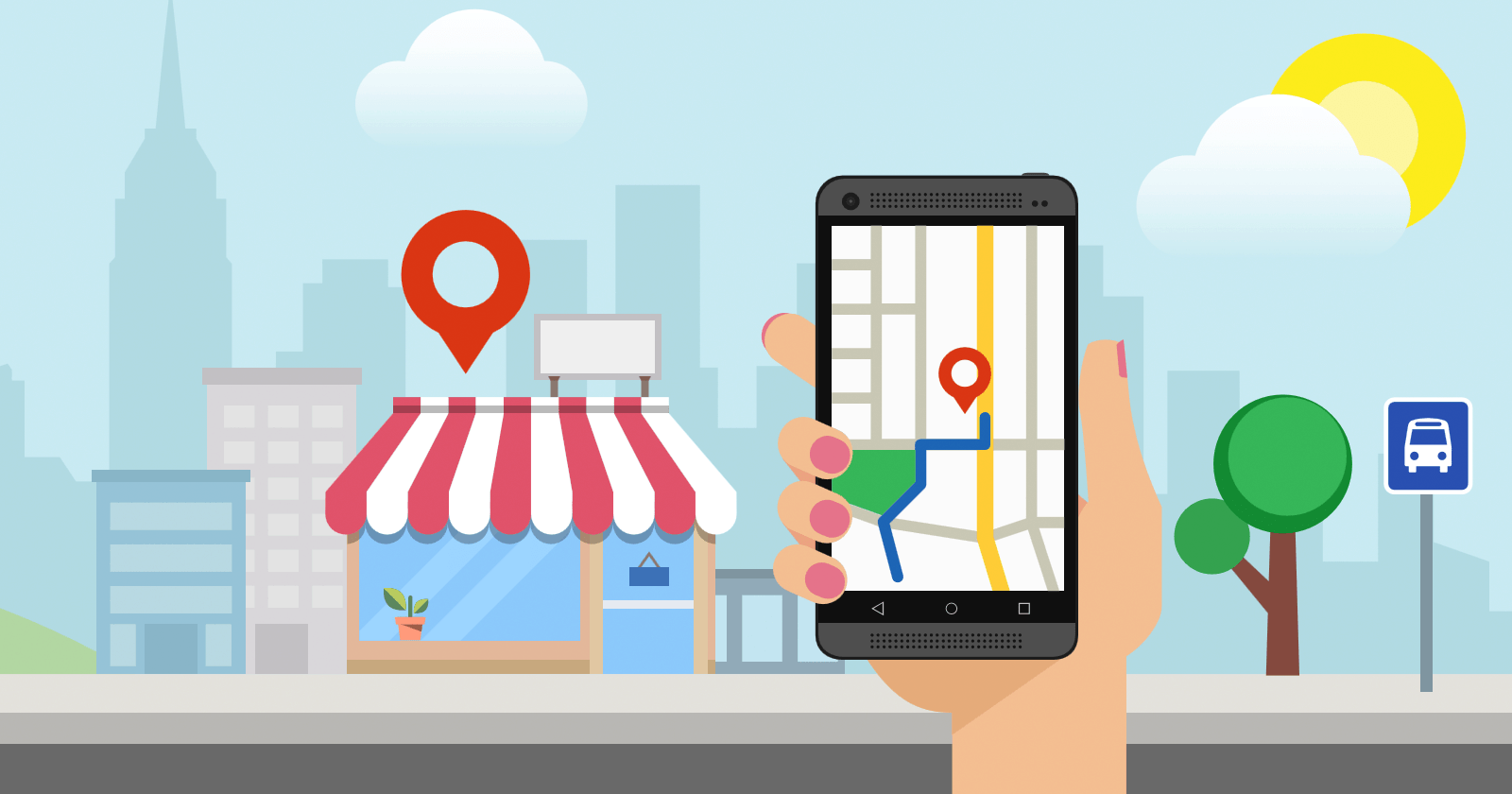What is Local SEO?
The Internet has become a source of information for most people. Today, before making a purchase, visiting a new location, or hiring a certain service, users look for information in search engines.
Based on the results, they make their buying decisions.
Looking always to improve the user experience, Google keeps the criteria used in the SERPs recommendations constantly updated. Meeting the algorithm’s requirements is absolutely essential for your business to feature among the most relevant results and attract consumers.
And that’s where Local SEO comes in.
Many users of Google and other search engines have the habit of using such tools to find local businesses.
All it takes is adding something like “near me” to the search, and the results will bring together the main business options within a given range of miles.
Searches that include location activate a so-called local search algorithm, which changes the way results are displayed.
Thus, in addition to standard criteria such as authority and relevance, the distance from the business to the customer’s location also makes a difference in the filtering of results.
Mobile Local SEO
It’s nothing new that the use of tablets and smartphones for digital marketing experiences increases every day.
As these devices generally track the user’s location in real-time, they become an important element in the context of Local SEO.
Think of a tourist visiting your city, for example. If they don’t know the area, they’re likely to pick up the phone, type in what they’re looking for, and rely on the results to continue the process.
Since Google has access to their location, it’ll indicate the nearest businesses to them.
However, in order for your company to appear as a suggestion on the Internet, you must be effective in providing the algorithm with information about its address and service regions, as well as detailing what kind of service it offers.
The benefits of Local SEO
As you’ve seen, one of the main benefits of Local SEO is the competitive potential that your brand can acquire.
From a good digital strategy, it’s possible to establish your company as a business reference in the region. When this happens, the advantages come in cascading effect.
To start with, the digital authority provided by a strong Local SEO strategy affects all your channels.
This means that if your company has blogs and social networks, you’ll find it easier to attract audiences to these platforms.
As far as the physical venue is concerned, the increase in traffic is also very likely.
According to a Think With Google search, 76% of people who search for local services on their smartphone visit the store within 24 hours. Moreover, 28% make a purchase and become customers.
That said, it’s clear that Local SEO is an approach that works for companies that include a physical space to perform sales and provide service (c-commerce doesn’t fit this scenario).
What are the local SEO ranking factors?
The idea of Local SEO and the benefits of this practice are already clear, right?
Now, to better understand how you can apply this strategy in practice, let’s focus on the main ranking factors taken into account by the local algorithm.
As you can observe, Google displays a list of establishments and informs the user of their locations. This information is extracted from your Google My Business profile, which we’ll discuss later.

The first three search results, shown in the image, are called the 3-Local Pack.
If you click on “more places” you are redirected to a more extensive list, called Local Finder.
Below these results, the mechanism displays the organic links as in any other search.
Note that the results displayed in Local Finder and those displayed in organic links have different information. This is due to the difference between the usual algorithm and the local one.
Since Google does not officially disclose the exact criteria used in Localized Organic Ranking, it’s important to follow studies that identify them.
At first glance, we can see the main differences. Google My Bussines Signals, for example, are very important when we talk about Local Search, but not so relevant when we focus on regular organic links.
The same happens with Review Signals, and the reverse occurs with Behavioral Signals.
Thus, achieving a good Local Finder Ranking may not guarantee a good Localized Organic Ranking and vice versa.
The point is: you must optimize your entire digital presence, from your channels to the information in Google My Business.
Although there is not an exact list of all the criteria used in the general ranking, Google itself points out 3 essential factors for Local SEO.
Let’s take a look at them.
Proximity
The proximity criterion refers to the distance of the business from the user or from the location they entered in the search.
Google understands that the most relevant results for the consumer are those closest.
If the user does not specify a region in the search terms, Google itself calculates the distances using the location information provided by GPS technologies installed on smartphones.
Popularity
The popularity factor has to do with the level of approval of a business in its region.
To evaluate this criterion, Google analyzes the brand’s popularity on the web and in the offline world.
Brand reputation on the Internet is measured by criteria such as links referring to the brand.
If they are consistent, they show that the company is a reference in the market and, in the case of local searches, well known in its region.
According to Moz’s survey, the online reviews of other consumers are also very relevant: they are the third most important factor for Local Pack, with 15.44%.
The more positive reviews and ratings your company receives on Google My Business, the higher the chance you have of achieving a good position in the SERPs.
Positioning in organic rankings also weighs on the evaluation. If your SEO strategy is excellent, the algorithm understands that your brand is successful and deserves to be at the top of the local search ranking.
Therefore, it’s clear that the traditional SEO tips that are valid for the general search are also valid to improve your position in the local search.
But as we said, Google also looks at popularity in the physical world. The search engine can identify, for example, whether a physical store receives many visits from customers.
If it does, the algorithm interprets that this business is well known and deserves to be among the first options of Local Pack.
Relevance
The criterion of relevance considers the correspondence between the business and the term the user searched for. To do this, Google analyzes the company’s data available in Google My Business.
The name of the company, the category in which it’s classified and the keywords that are inserted in its description are very important elements in this process.

What types of content help your local SEO strategy?
As in virtually all areas of Digital Marketing, content production is key to optimizing your Local SEO strategy.
After all, featuring in the Localized Organic Ranking is much more possible than appearing in the disputed 3-Local Pack.
And for that, content is the key.
Going back to restaurants, imagine you compete with big players, like McDonald’s. It may be difficult to compete for the keyword “fried food, ” but the competition is certainly less for terms like “fried food in Boca Raton”.
In any case, to rank well, you have to invest in content.
But after all, what kind of material can you produce to impact your Local SEO? Check out some suggestions!
City-specific landing page
The landing page is a primary resource for capturing new customers. So, to boost your site SEO, invest in the creation of specific landing pages for each city where your brand is present.
The process may require some work, but customization is critical to enhance the user experience and increase their chances of conversion.
FAQ pages
FAQ pages enable users to quickly and efficiently clarify questions about your business.
The more information the public has about your brand, the more likely they are to become customers.
Based on your knowledge of the buyer persona’s behavior, create a full page to provide the most frequently asked questions from the audience, highlighting clear and direct answers.
A restaurant can answer, for example, about its gluten-free options. If the answer is considered relevant, it may become a featured snippet, information that is above the organic results.
Events with local appeal
As your focus is on local business, it’s important to integrate it into the community’s culture.
Partner with relevant events in the city, produce interviews with local celebrities, and celebrate commemorative dates with offers in your store.












Replies to This Discussion